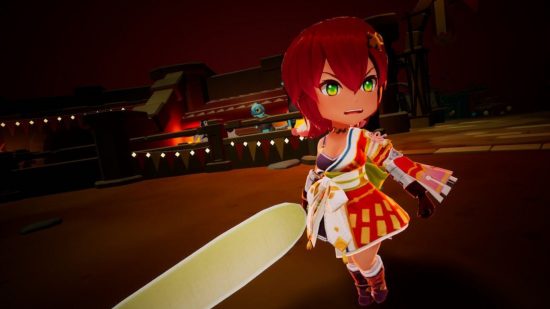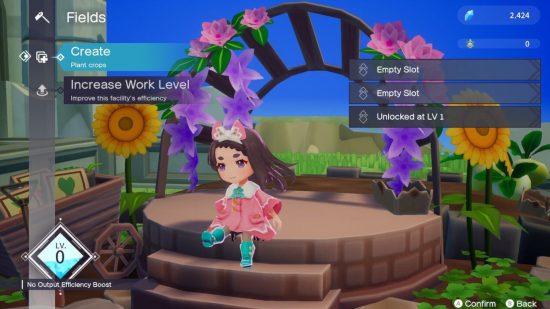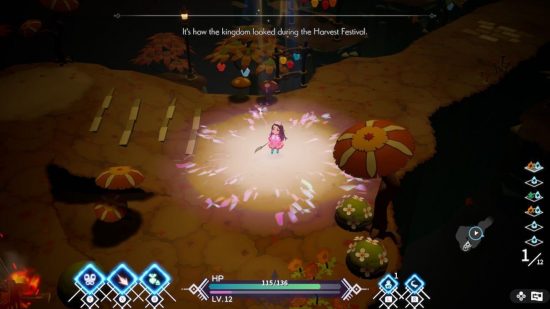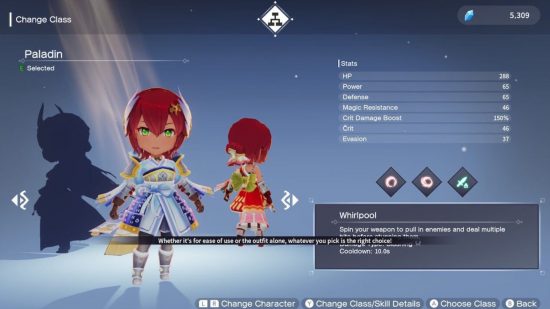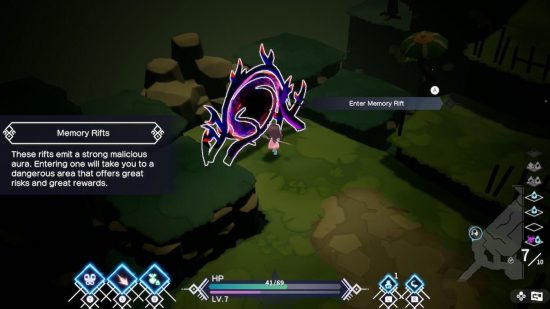Our Verdict
Silent Hope brings classic isometric JRPG dungeon crawling into the modern age with its adorable characters, slick combat, and heartfelt narrative about protecting the people we love. The seven protagonists and hundreds of potential load-outs offer endless ways to play and replay this magical story.
I didn’t grow up playing any JRPGs, so since getting more involved in the gaming scene I’ve been looking for an opportunity to try one out. Marvelous’s Silent Hope provides exactly that as I found myself intrigued by the story’s premise and, more specifically, the character design. I fell in love with the farmer character right away and knew I needed to play this game.
Sometimes judging books by their covers can help you find your new obsession, which is exactly what’s happened here. Since picking up Silent Hope for the first time, I’ve not stopped thinking about it. I want to spend every spare moment I have continuing my journey further into the abyss with my wacky crew of adventurers. Everything about this game clicks for me, from the combat and the hub world, to the character designs and playstyles. It’s rare that I find that in a game.
Silent Hope takes place a couple of centuries after a time of unrest led the king to steal his people’s speech and flee into an endless chasm known as the abyss, leaving only his daughter, the princess, to mourn for him. She cried so many tears that she encased herself in a crystal teardrop by the abyss’ entrance. You play as seven different heroes who are drawn to the princess’s weeping, before taking on the quest to save her from her prison and reunite her with her father.
My main concern going into JRPGs and other similar genres is the convoluted world-building and exposition that characterizes them. Luckily for me, Silent Hope’s core story is simple to follow yet still compelling. I’m naturally drawn to finding out why a king could possibly want to steal his people’s speech, and the princess is so friendly and positive that I can’t help but want to aid her. Instead of dumping a bunch of unnecessary information on you all at once, the princess gradually tells her story as you make your way through each level. You even get a snippet from the king’s perspective after each boss fight, which goes a long way toward humanizing him and helps me empathize with him a lot more.
The levels themselves are inspired by classic isometric dungeon crawlers but with modernized graphics and adorable chibi character models. They’re semi-randomly generated – as in each run has different levels but they seem to cycle through a collection of pre-made maps, rather than using true procedural generation. Even when I recognize the layout of a specific map, I don’t find it boring. In fact, it’s comforting as I know where to find key items.
As you head further into the abyss, you also travel further into the king and the princess’s memories of their kingdom, so each floor is based on a new season and the designs are simply stunning. My favorite is the second floor which is themed around a harvest festival. As a sucker for fall colors, it was an instant hit for me. The pace of the floors and the environmental storytelling make for a really immersive experience.
The benefit of seven protagonists is that they each represent a different class and therefore give you a different way to fight through levels. At this point, I’ve played around with every single class except the wanderer, purely because in a world where I can be a sweet lolita farmer wielding a pitchfork or a housemaid rogue, why would I choose to play as a generic blonde-haired sword guy? Each class plays completely differently thanks to unique weapons and skills, but they all feel equally satisfying to pilot. I mostly main the farmer, initially because of her design but more so now because of her speed, range, and unique summon attacks, but the claymore-wielding warrior has absolutely carried me recently.
As far as I can tell, you can definitely get through this entire game playing just one class if you make sure to tailor your builds to each floor. Or, you can take my approach and level up each of the classes a little bit for more flexibility in the late game. I typically don’t enjoy stealth characters like rogues but something about Silent Hope’s rogue maid really speaks to me. It might be her sheer speed and her shadow step, which is handy for someone like me who isn’t the most adept at dodging, as you can dash through enemies.
Character builds are super customizable too, even down to the button mapping of your three main skills. Your basic attack is always bound to A, but whenever you learn a new class skill you get to assign its slot yourself. There’s a huge array of distinct weapons in each category that you unlock by crafting them from ‘memories’ dropped by enemies or found in chests. You can find the same weapon in various rarities and ranks, and level them up at the forge. There are so many options for a custom loadout in Silent Hope, without even touching on rings, earrings, and magistones!
Magistones took me a little while to figure out, but essentially certain weapons and accessories have a magistone slot. You’ll find items such as voidstone, flamestone, and earthstone on your adventures and these can slot into your equipment to change your elemental damage or defense type. This isn’t super significant at the beginning of the game but I found them invaluable when it came to taking on the second floor, which recommends using lightning attacks.
The forge I mentioned earlier is part of Silent Hope’s base camp – the hub world you return to after a dungeon run. Each protagonist has a role within the base camp, helping you to craft materials and grow crops while you’re off adventuring in the abyss. It creates a really satisfying gameplay loop where you return from a trip, collect what you’ve made, plant more crops, request more materials, upgrade your gear, and then head back out. You can also speak to the princess here to appraise mysterious weapon memories, collect quest rewards, and even change class. Each hero has two additional classes they can unlock as they level up, and you’re able to mix and match skills from all three to create the perfect build for your playstyle or the situation.
If you like a bit of a challenge, which I typically don’t as I’m not the best at chaining combos, Silent Hope has plenty to offer you as well. Over half of the levels on each floor provide additional trials, such as defeating a certain number of enemies before leaving or getting to the gate without using a healing potion. I like these trials a lot as they encourage me to switch up my playstyle and reward careful or skilled gameplay. They’re not too challenging, but I can see them scaling pretty quickly in the end game.
There are also memory rifts scattered throughout the levels which are ominous black portals leading to an area with increased risk, but also increased rewards. I’ve only tried them out a couple of times as I don’t feel the need to make things difficult to have fun and they were definitely challenging but not impossible, and the rewards made the stress worth it!
If you couldn’t tell, I think Silent Hope is an exceptional game. The story is heartwarming and intriguing, the combat is varied and fun, and every little details seem perfectly tuned to what I find enjoyable about videogames. Even with my limited JRPG experience, I can tell it’s not doing anything particularly groundbreaking for the genre, but for a beginner adventurer like myself who values satisfying combat and a story with real heart, it’s near perfect.
That’s it for our Silent Hope Switch review. Check out our lists of the best JRPGs and best Switch RPGs for more immersive fantasy adventures, or hop over to our list of the best dungeon crawler games to take your combat skills elsewhere.
